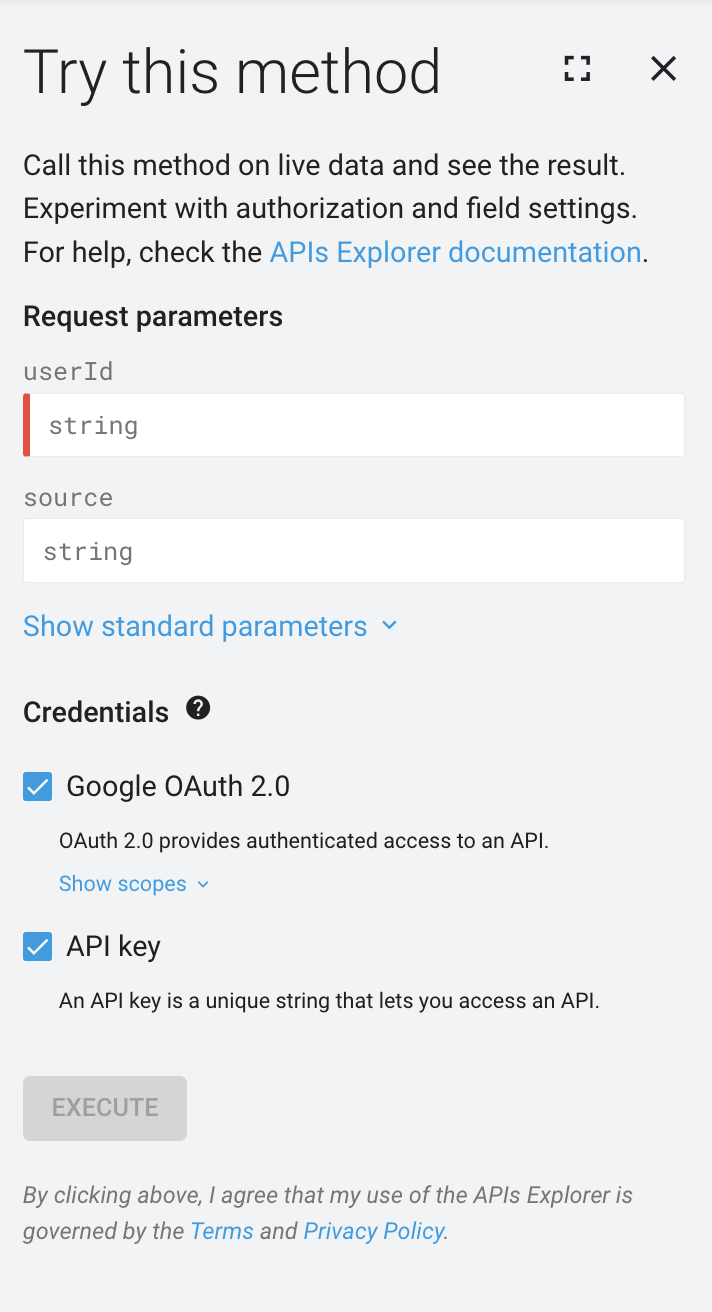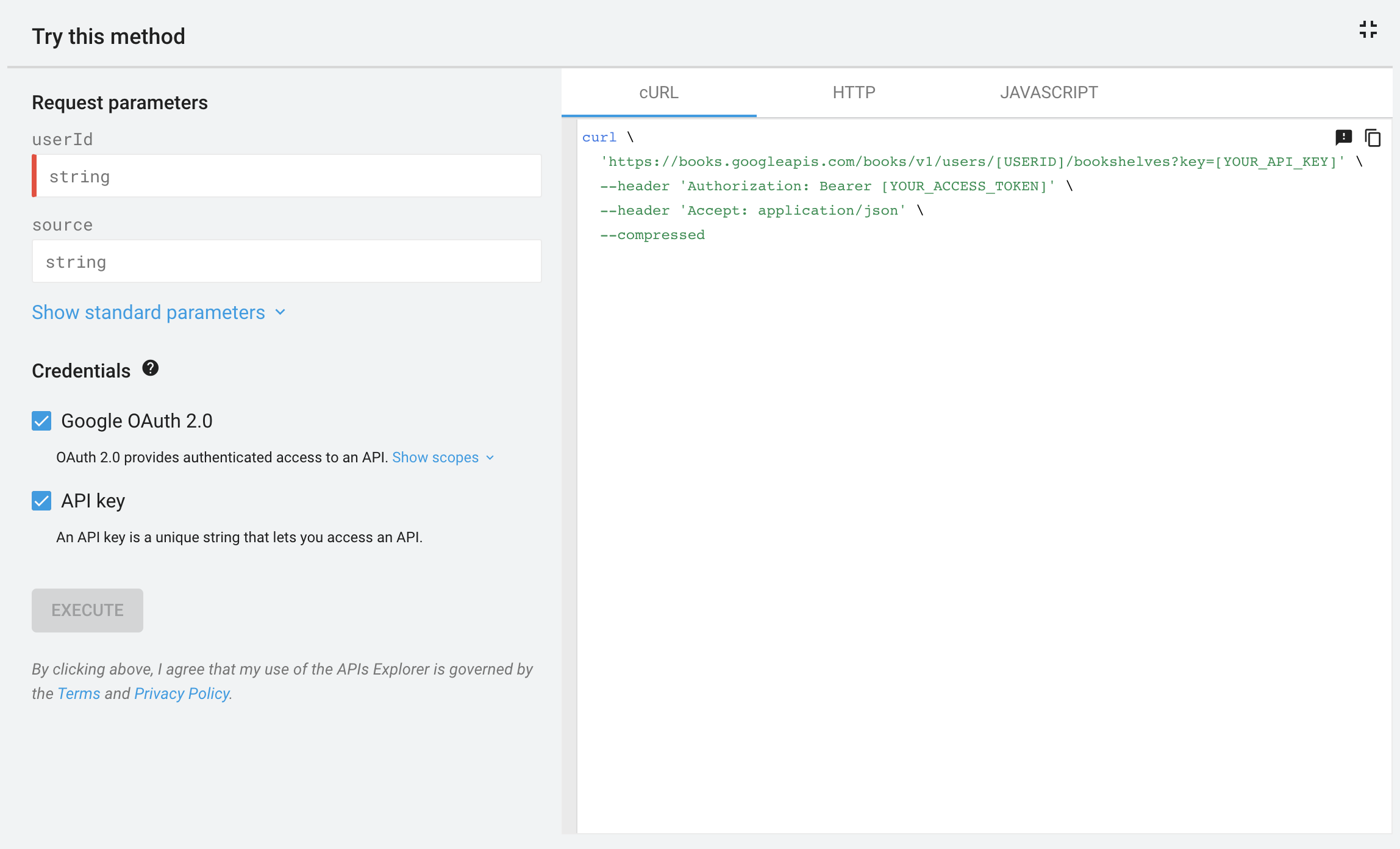Eksplorator Google API to narzędzie dostępne na większości stron dokumentacji interfejsu API REST, które umożliwia testowanie metod interfejsu API Google bez pisania kodu. Eksploratory interfejsów API działają na rzeczywistych danych, dlatego podczas testowania metod tworzenia, modyfikowania i usuwania danych należy zachować ostrożność.
Korzystanie z katalogu
Listę interfejsów API Google, które możesz przeglądać, znajdziesz w katalogu Google APIs Explorer. Ta lista zawiera linki do dokumentacji API na temat obsługiwanych interfejsów API. Wykonaj te czynności, aby poznać interfejs API:
- Otwórz katalog Google APIs Explorer.
- W polu wyszukiwania u góry wpisz nazwę interfejsu API, który chcesz zbadać.
- Kliknij nazwę interfejsu API. Otworzy się dokumentacja API.
- Po lewej stronie kliknij metodę, której chcesz użyć w nawigacji.
Po prawej stronie znajdź panel „"Wypróbuj tę metodę”." Poniżej dowiesz się, jak korzystać z panelu bocznego APIs Explorer i jak rozwijać go na pełnym ekranie.
Korzystanie z panelu bocznego


Domyślnie eksplorator interfejsów API jest widoczny po prawej stronie ekranu w dokumentacji API.
W panelu bocznym APIs Explorer możesz dostosowywać te sekcje i dostosowywać je:
- Parametry żądania, jeśli są wymagane przez tę metodę.
- Treść żądania, jeśli jest to wymagane przez metodę.
- Dane logowania, aby przetestować metodę za pomocą różnych typów i zakresów danych logowania.
- Wykonaj, aby uruchomić metodę z użyciem określonych przez Ciebie parametrów i ustawień.
- Wynik wyświetlany po wykonaniu metody.
Wyświetlanie na pełnym ekranie


W zwiniętym panelu bocznym Eksploratora interfejsów API możesz kliknąć Pełny ekran , aby rozwinąć ten interfejs. W panelu pełnoekranowym wyświetla się dodatkowy panel zawierający przykłady kodu, odpowiedzi application/json i nieprzetworzone odpowiedzi HTTP.
Uwierzytelnianie
Eksplorator interfejsów API używa własnych danych logowania do przesyłania żądań. W eksploratorze interfejsów API nie można używać niestandardowych danych logowania.
Formaty danych
Eksplorator interfejsów API obsługuje tylko JSON dla odpowiedzi i żądań ładunków. Te formaty nie działają w eksploratorze interfejsów API, nawet jeśli obsługują one inne formaty danych.
Dalsze kroki
- Dowiedz się, jak wyświetlić interfejs APIs Explorer i wykonać metodę.
- Dowiedz się, jak testować metodę przy użyciu różnych danych logowania i zakresów.
- Dowiedz się, jak uruchamiać lokalny kod eksploratora interfejsów API.
